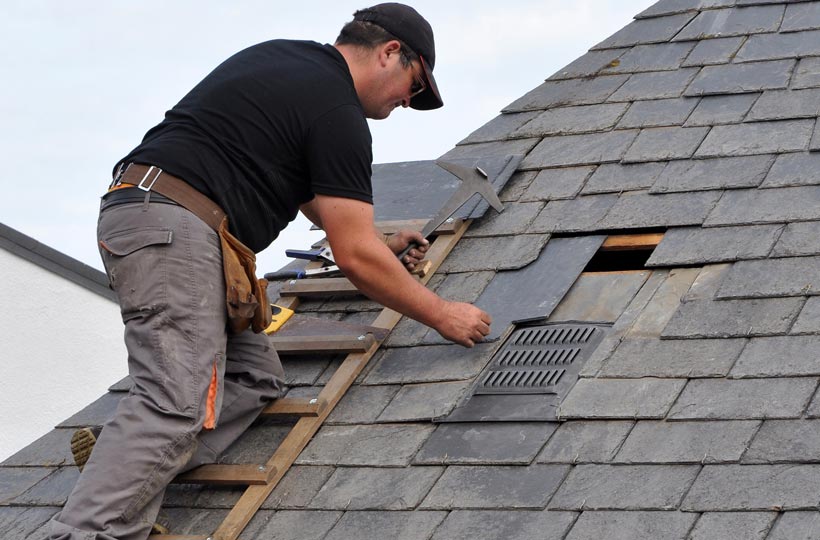
DIY roof repairs can save you substantial money and provide a sense of accomplishment. But tackling a damaged roof yourself requires careful consideration. This comprehensive guide explores simple DIY roof repair solutions while emphasizing when a professional roofer is essential for your safety and the structural integrity of your home. We’ll cover everything from identifying common issues to understanding the limits of DIY repair, helping you decide when to seek professional help. This article is structured into sections on common repairs, tools and materials, safety considerations, and knowing when to call in a professional. Each section will be detailed to give you the knowledge you need to make an informed decision.
Identifying Common Roof Problems
Knowing the signs of a problem is the first step in any DIY roof repair. Ignoring minor issues can escalate into costly repairs down the road. Common roofing problems include missing or damaged shingles, cracked or deteriorated flashing, and leaks. A thorough inspection is vital to determine the source of the issue and the extent of the damage.
Recognizing the Signs of a Problem
Visible signs of shingle damage include missing, cracked, or curled shingles. Look closely for discoloration or unusual wear patterns. Pay attention to areas around chimneys, vents, and skylights, as flashing often shows signs of damage before leaks occur. Moisture stains on the interior walls or ceilings are a strong indicator of a leak.
Basic Roof Repair Tools and Materials
Having the right tools and materials is essential for successful DIY roof repairs. Improper tools can lead to injuries and ineffective repairs.
Essential Tools
- Safety Gear: Wear appropriate safety gear, including a hard hat, safety glasses, gloves, and work boots. Fall protection is also a must when working on roofs.
- Ladder: A sturdy ladder is crucial. Ensure it’s rated for the weight load and the height of the roof.
- Shingles: Choose the same type of shingles as your existing roof to maintain a consistent appearance and avoid potential issues with overlapping.
- Flashing: Choose the correct material and size for the flashing being replaced.
- Caulk: Caulk is essential for sealing gaps and preventing leaks. Choose a weather-resistant caulk to ensure it withstands the elements.
- Other tools: A roofing tool kit should include a utility knife, pry bar, hammer, and sealant gun among others.
Simple Roofing Repairs You Can Tackle Yourself
Several common roofing problems can be addressed with basic DIY repairs. Here are a few examples.
Replacing Missing Shingles
Replacing missing shingles is a fairly straightforward DIY repair. Always follow the manufacturer’s instructions and ensure the replacement shingles match the existing ones. Use appropriate tools to remove the damaged shingles and install the new ones. A skilled roofer will inspect the structure of the roof and make sure there are no underlying issues, like structural damage or rot.
When to Call a Professional Roofer
While some minor repairs can be handled by homeowners, certain issues require professional expertise.
Beyond DIY Capabilities
- Extensive Damage: If the damage is extensive, involving large sections of the roof, or if you notice signs of structural damage, it’s essential to call a professional. Assess the size and scope of the damage and if it affects the structural integrity of the roof. Safety should be your priority.
- Complex Repairs: Repairs involving complex issues, such as replacing large portions of the roof or intricate repairs to flashing, are best left to professionals.
- Warranty Concerns: If your roof is still under warranty, consult the warranty documents for guidelines and to ensure any repairs adhere to the warranty’s terms.
- Safety Concerns: Working on a roof can be dangerous. If you lack experience, have concerns about working at heights, or have health limitations, a professional roofer is the safer option.
Preparing for a Professional Roofing Consultation
Getting a professional consultation can help you avoid costly mistakes and ensure you get the best possible outcome for your roof repair needs.
Getting a Quote
- Gather information: Gather details about your roof, including the type of roofing material, the extent of the damage, and any previous roof repairs. Note down any specific concerns or questions you may have.
- Schedule a consultation: Schedule a consultation with a reputable roofing contractor, who will inspect your roof and give you a personalized quote for the work. Request a quote based on your findings.
In conclusion, DIY roof repairs can save you significant money and give you a sense of accomplishment. However, knowing when to call a professional is just as crucial. This guide provides a framework for evaluating your roofing needs and empowers you to take on smaller repairs confidently while understanding the limits of your DIY abilities. For complex or extensive damage, professional roofing contractors will provide the necessary expertise and equipment to ensure your home’s structural integrity and safety. Don’t hesitate to contact a licensed roofer for a free quote if you’re unsure about the scope of the repairs.